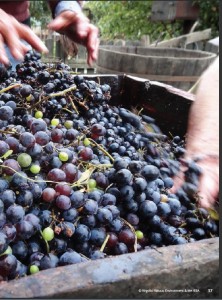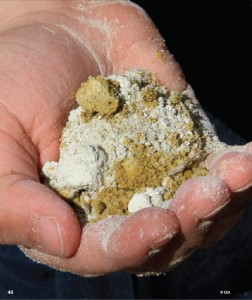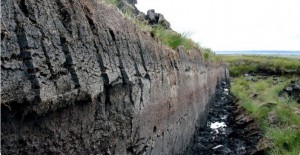The European Environment Agency (EEA) recently issued another in its series of Signals (2015), titled Living in a changing climate. Signals 2015 consists of nine articles, including two interviews, exploring how climate change is currently influencing Europe and how it is expected to impact in the future. It also provides information on the main sectors contributing to climate change as well as the EU’s efforts to mitigate and adapt. While all the sections of Signals 2015 are important to read and consider, here we will review the sections on “Agriculture and climate change” and on “Soil and climate change,” as they have particular relevance on the island of Ireland where agriculture and soil are critical resources.
Agriculture
As we have known, agriculture generates several greenhouse gases (GHG) through its various stages of production, storage, processing, packaging, transporting, preparing and serving. In addition there are environmental and social costs associated with the wastage from uneaten or spoiled food.
Of particular concern for GHG emissions are methane from the digestive systems of livestock (belching and farting), or from manure that is stored, and nitrous oxide (NOx) generally from use of nitrogen fertilizers. The Signals report indicates that agriculture accounted for 10% of the EU’s total GHG emissions in 2012. However, in the Republic of Ireland agriculture currently makes up about 30% of total GHG emissions and it is estimated, by EPA, that such emissions will increase by 12% by 2020 as a result of the impact of the government’s Food Harvest 2020 policy and removal of the EU milk quota. In Northern Ireland, agriculture currently accounts for 29% of total NI GHG emissions.
Reducing GHG emissions in the agriculture sector, across the EU, will not be easy. Production changes include capturing methane from manure, more efficient use of fertilizers, and reducing emission per unit of food produced. But these efficiency gains remain speculative as there has been little demonstration that the farming community is financially willing to adopt many such practices, at least without significant government assistance.
Of course, an easier fix, mentioned only in passing in the Signals report, likely out of political sensitivities, is for consumers to switch from emission-intensive food products, like beef and milk, to more sustainable food products.
Climate change impacts will have increasingly different effects in northern and southern Europe. In the north, warmer temperatures can likely increase growing seasons, and extend frost-free periods, as well as produce the conditions for new crops. In the south, extreme heat, and less water, will harm crop production, and may increase damage to whatever is grown from new pests and diseases. Such changes would likely advantage farming on the island of Ireland, although more rain in the winter and less water in the summer on the island will have its deleterious effects. The report notes that in some Mediterranean areas, the hotter and drier weather in the summer might allow summer crops to be grown in the winter months.
While food demand is expected to grow by 70% over several decades, more intensive agriculture (with more food produced from the same land using more fertilizers) will lead to more NOx emissions, and more climate change, as well as increased nitrates to soil and water bodies. Moreover, there is limited land, and increasingly less water, available for more food production, especially in the EU.
The Signals report does exhibit a certain chauvinism when it argues that the EU is one of the world’s largest food producers and any reduction in the key staples it produces would “jeopardize food security in the EU and in the world, and increaseglobal food prices.” The staples cited include 2/3 of the world’s wine and 3/4 of olive oil. Somehow it is imaginable that many people, especially in the food-starved regions, can do without wine and olive oil. The agriculture-food-drink industry in Ireland similarly argues that its products are critical for avoiding starvation in the developing world, yet one suspects that people in the developing countries could do without prime beef and fatty cheeses.
Soils
The very basics of soils are that plants photosynthesise and draw carbon out of the atmosphere. The carbon that is not absorbed by the above-ground plant is distributed through the roots into the soil. If left alone, carbon becomes stable and remains “stored” or “locked” in the soil for years, maybe thousands of years. If disturbed and released back into the atmosphere, the carbon contributes to climate change. Thus, soil can act as a carbon sink, or a source of carbon releases.
Different soils handle carbon differently. The most carbon-rich soils are peatlands, an important part of the Irish landscape. Grasslands also store lots of carbon, again an important part of Ireland’s natural resources. Less carbon is found in the warm, dry soils in southern Europe.
Climate change, in and of itself, will affect how soil stores or releases carbon. Higher temperatures lead to more vegetative growth, which can store carbon, but higher temperatures can also increase decomposition and reduce carbon in the soil. Higher levels of CO2 in the atmosphere can cause microbes in soil to break down organic matter and release more CO2. Which effect will occur in any particular region is difficult to predict. More clearly, in the north of Europe and Russia (and Alaska) melting permafrost from climate change can release large amounts of methane, a shorter-lived but more potent GHG than CO2.
Less difficult to predict is what happens to peatland when disturbed, an instance of how land use will contribute to climate change. In peatland the carbon does not decompose due to low levels of oxygen in the water but if allowed to dry out, the organic matter in the soil breaks down and releases carbon dioxide (CO2) into the atmosphere leading to more climate change. Studies have indicated that restoring peatland can compensate for the loss of organic carbon from exploiting peat for energy use.
An Taisce
Other instances of land use can have significant effects on soil. Clearing forests releases the carbon otherwise stored in forest soils. Ploughing land for farming hastens decomposition and mineralisation of organic matter, lowering the carbon-capturing quality of soil. This impact can be offset by reducing tillage, rotating crops, using cover crops or leaving crop residue on the surface of the soil. Organic farming also offers alternatives as the use of manure rebuilds the organic carbon deep in soils and not using fertilizers saves on CO2 emissions. The UN Food and Agriculture Organisation estimates that organic farming systems contribute 48% to 66% lower CO2 emissions per hectare than conventional farming. Of course converting arable land to grassland is a fast way to increase the organic carbon in farmed soil.
While we typically associate soil with countryside, even cities can make use of soil. Healthy soils can help prevent or reduce runoff that is more likely with increased extreme weather events. Replacing hard surfaces, such as concrete, with permeable soils (e.g., in driveways, parking lots, sidewalks) also reduces runoff and allows water to be captured below the surface and to lower the “heat island” effects in cities.
Conclusion
The report notes that “who gets to produce what and where is a socio-political question and is likely to become more controversial in the future.” At 37. One expression of this developing controversy is the land-grab practice of developed countries, including China, buying up large tracts of farm land in less-developed countries for exporting food elsewhere.
The EEA deserves credit for ending the discussion on agriculture and climate change with the following: “We need to increase yields while reducing our dependence on agrochemicals, to reduce food waste, and to reduce our consumption of resource-intensive and greenhouse gas-intensive foods such as meat.” At 38. It is important that EEA place any increase in yields in the context of reducing agrochemicals, food waste, and even meat consumption.
Sources:
European Environment Agency, Signals 2015: Living in a changing climate www.eea.europa.eu/highlights/living-in-a-changing-climate
Irish Environmental Protection Agency, Ireland’s Greenhouse Gas Emission Projections, 2012-2030 (25 April 2013). www.epa.ie/pubs/reports/air/airemissions/irelandsgreenhousegasemissionsprojections2012-2030.html#.VbjV8LfGPKw
Department of the Environment Northern Ireland, No change in total Northern Ireland greenhouse gas emissions (9 June 2015). www.doeni.gov.uk/ghg-inventory-statistical-bulletin-2013.pdf






No comments yet, add your own below